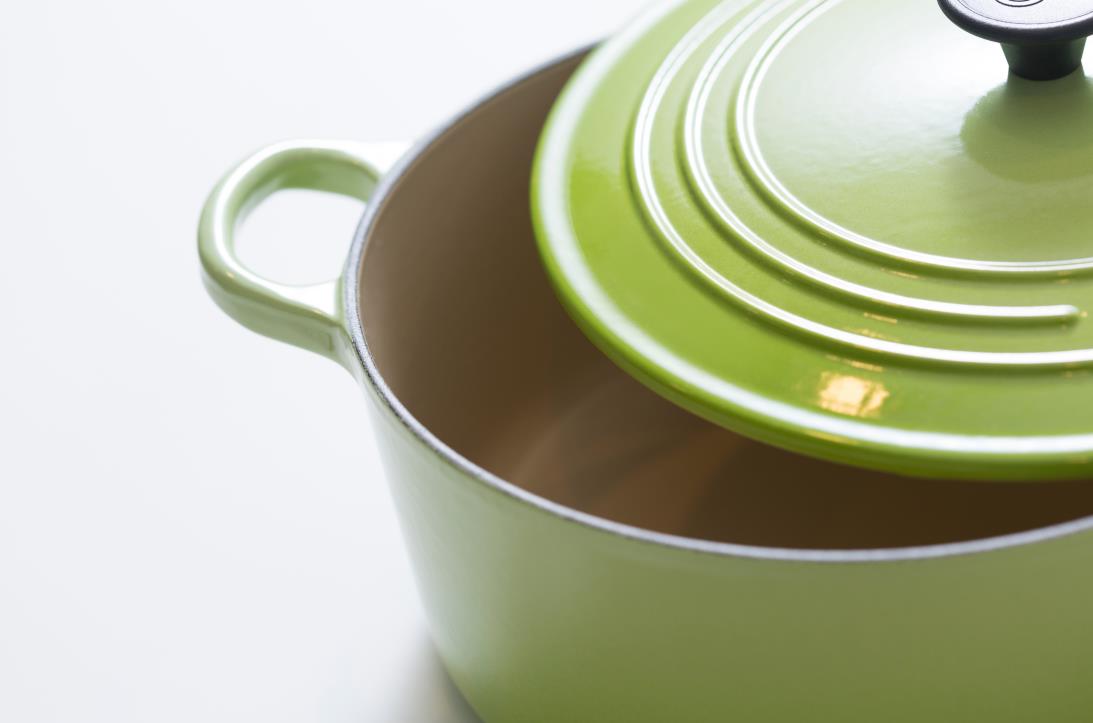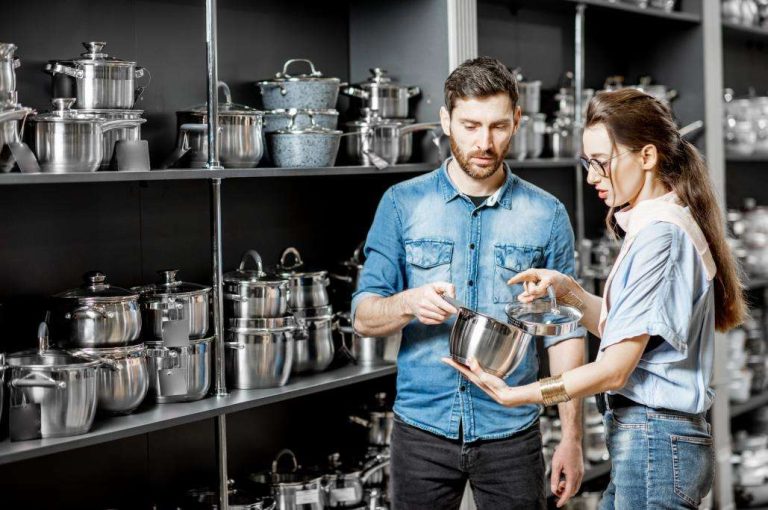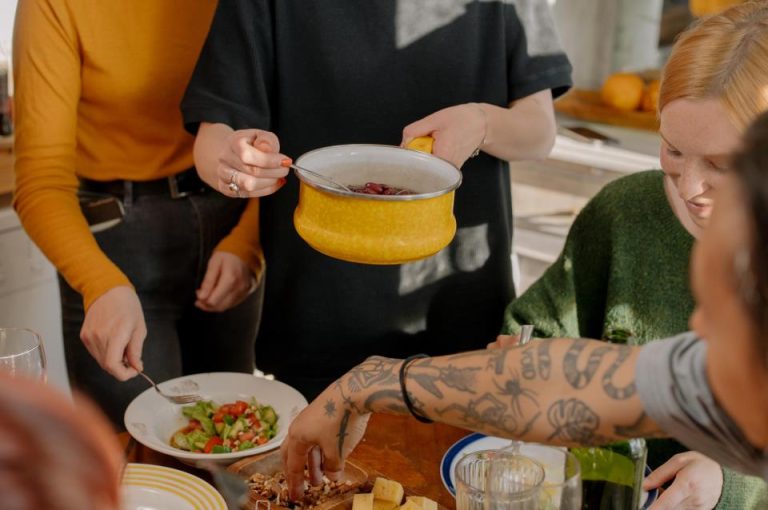It used to be that non-stick pans dominated the cookware market, particularly Teflon (PTFE). The health concerns and poor resistance to high heat made cooks turn elsewhere.
Enamel and ceramic cookware remain the best substitutes to cover the absent comfort. These provide a non-stick cooking surface that doesn’t need seasoning like cast iron.
Enamel cookware is more or less the same as non-stick. It is a non-porous coating that covers the core metal. It is mostly used for layering cast iron skillets and pots that seal the iron. The difference between enameled and bare cast iron is the coating prevents rust and iron from reacting with acidic foods.
How ceramic is used in the cookware industry varies. Manufacturers can make ceramic cookware using clay, quartz sand, and minerals. This type of ceramic cookware is entirely ceramic. The other variations come as a coating material, the same as enamel.
While similar, enamel and ceramic cookware have a good number of differences. This article will cover these differences to provide an in-depth comparison.
Difference between enamel and ceramic materials
Enamel is powdered glass fused at very high temperatures to a metal base. It is also known as vitreous enamel or porcelain enamel. The only application for enamel in cookware is to coat metals. Manufacturers can’t use this material to create a standalone product.
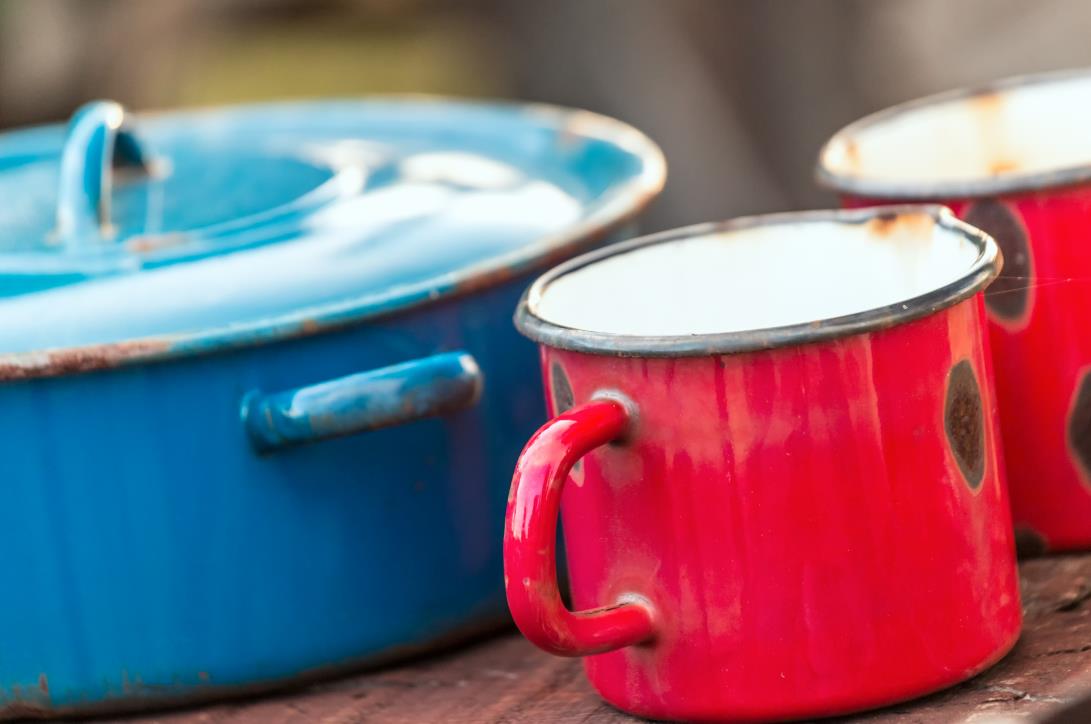
Ceramic can have the same applications as enamel. However, the coating isn’t ‘ceramic’ like the ones made from clay-based materials. The coatings are usually fluoropolymer or silicon-based materials such as silicon dioxide. These can be ceramic in their classification and mimic the appearance but aren’t quite the same as clay-based ceramics.
There is also ceramic cookware made using clay-based materials. This type of ceramic cookware gets hardened in furnaces. The result is non-reactive cookware with properties similar to cast iron.
Enamel coatings are usually used for cast iron. Cookware made from 100% ceramic materials and enameled cast iron pots and pans share many similarities.
However, the majority of the ceramic cookware in the market isn’t entirely made from ceramic. Most products utilize an aluminum or stainless steel base and follow the same manufacturing process as enamel. This non-stick ceramic cookware is regarded as a better and healthier alternative to Teflon pans and pots.
Buy Wholesale Cookware and Start Scaling up with Us Today
Contact us and connect with a sales rep to get a free quote.
Enameled cast iron vs. ceramic cookware
Enamel coatings are mainly used for cast iron skillets and pots. Ceramic is more widespread as a coating material that usually surrounds an aluminum metal base.
Since these are the most popular types of enamel and ceramic cookware in the market, it makes sense to base these as part of our comparison. Here is a quick overview of how the features of these two distinct cookware materials compare.
Cooking performance
Two things concern cooks the most about cooking performance: heat retention and conductivity.
Heat retention
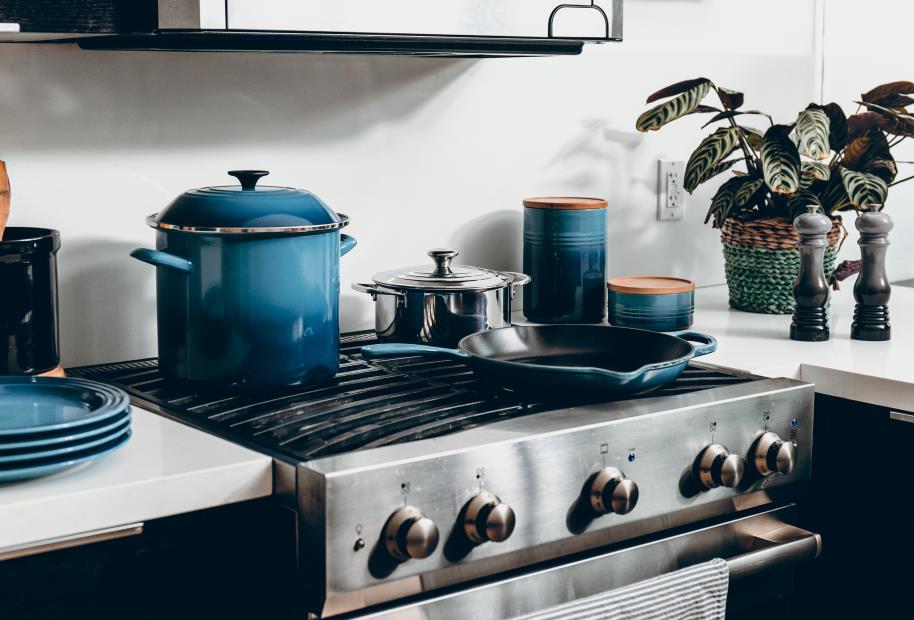
Cast iron is renowned for its ability to hold heat. Enameled cast iron is no different. Once it gets hot, it will stay hot. However, cooks must pay attention to how enameled cast iron cookware gets heated. Water or oil should cover the surface area before heating. Turning the heat on and heating the cookware empty is a recipe for cracks.
This aspect also applies to ceramics. The heat retention – not so much. Since aluminum or steel bases aren’t as good at holding heat as cast iron, ceramic cookware can’t clasp onto heat at the same level. The clay-based ceramic cookware, on the other hand, is on par with enameled cast iron in heat retention.
Heat conductivity
The poor heat conductivity overshadows enameled cast iron’s superb heat retention. Ceramic cookware with aluminum or steel metal is a better conductor of heat. Even though they can’t stay hot as well, the fast transfer of heat helps cook foods evenly.
The clay-based ceramic cookware is similar to enameled cast iron. It takes some patience to get hot. While these can be downsides, slow heating with good heat retention makes these pots and pans ideal for braising and stewing.
Aside from these, cookware with a ceramic coating doesn’t take high heat well. Enameled cast iron resists high heat without warping or cracking. The high-temperature enameled cast iron withstands is often too much for ceramic-coated cookware.
This good relationship with high temperatures makes enameled cast iron an excellent material for baking, especially with Dutch ovens.
Durability
Enamel and ceramic coatings are fragile. Using metal utensils can chip the coating and expose the metal core. Wooden and silicone utensils should be used for both enamel and ceramic cookware. Similarly, these coatings can also chip if dropped or washed in the dishwasher.
Enameled cast iron and clay-based ceramic cookware last longer than ceramic-coated cookware. Over time, the ceramic coating fades away and loses its effectiveness. If used at high temperatures, this happens much faster. So enameled cast iron and 100% ceramic cookware have higher durability than ceramic-coated cookware.
Upkeep
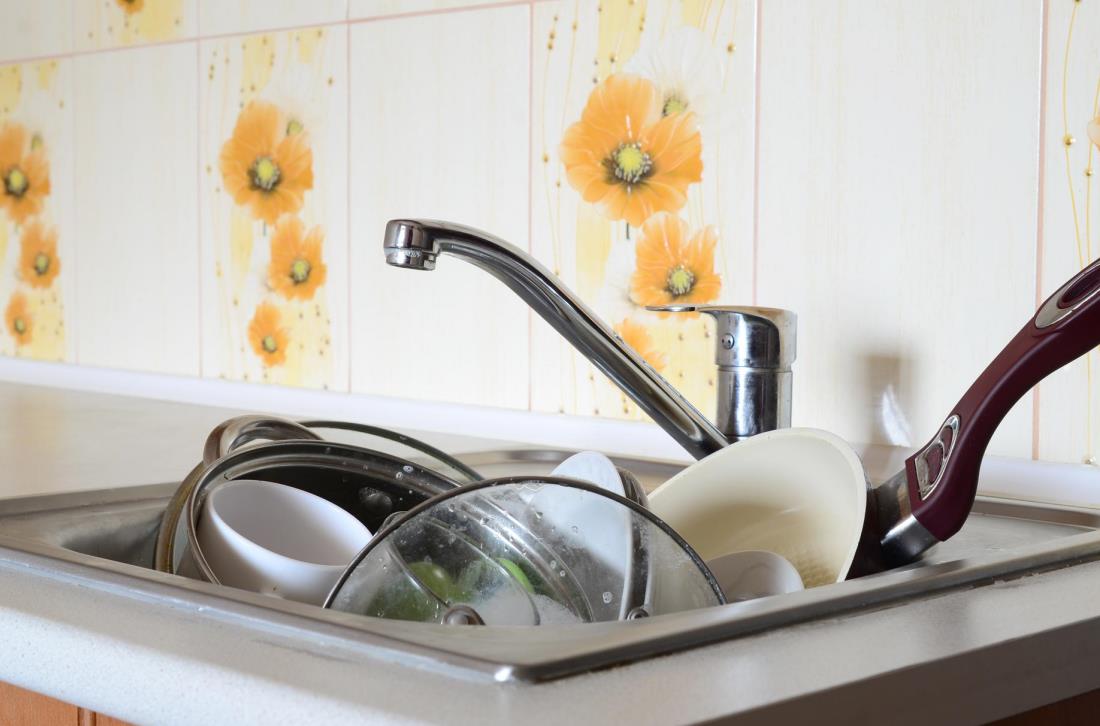
These types of cookware are technically dishwasher safe as the coatings seal the metal. However, the fragile nature of these materials eliminates the use of dishwashers.
It is best to hand wash these types of cookware with a scrub brush to remove food stains. Because they prevent foods from sticking, enamel and ceramic cookware are easy to clean.
Additionally, metal utensils must be avoided to stir foods. It comes at the forefront of ceramic and enameled cast iron care. Otherwise, chipping will be inevitable.
Enamel and ceramic cookware can last for years when these upkeep requirements are kept in check.
Comparison table
| Heat retention | Heat conductivity | Induction compatibility | Can be used in the oven | Can be used in the broiler | Durability | Upkeep needs | |
| Ceramic coated cookware | Fair | Excellent | Yes | Yes | No | Fair | Minimal |
| Enamel coated cookware | Perfect | Fair | Yes | Yes | Yes | Good | Minimal |
| Clay-based ceramic cookware | Perfect | Poor | No | Yes | No | Good | Minimal |
Conclusion: enamel or ceramic cookware?
You can categorize ceramic cookware into two: ceramic-coated and clay-based. The ceramic-coated ones are good alternatives to satisfy customers used to the convenience non-stick cookware provides. You can market them as safer alternatives to Teflon pots and pans.
100% ceramic cookware is more or less a niche cookware. This type of ceramic cookware is usually for those who bake more than cook over the stovetop.
Enamel is the most popular coating material for cast iron. It is the perfect cookware for cooks looking to get the benefits of cast iron without the need for seasoning. If your customers need something more convenient and lightweight, offer ceramic-coated cookware as an upgrade from non-stick that’s safer and better.
Other cookware materials to consider
Cast iron, stainless steel, copper, aluminum, and other cookware materials can be as great picks as enamel and ceramic. The preferences of shoppers vary. Selling different cookware materials can help your store reach a wider profile of consumers.
Consider having at least a few sets of various cookware types to appeal to cooks with something specific in mind.
Buy Wholesale Cookware and Start Scaling up with Us Today
Contact us and connect with a sales rep to get a free quote.
Source cookware from LeeKnives
LeeKnives can help you source cookware from the top cookware manufacturers in China. The connections we’ve built over 30 years in knifemaking can get your store further than the competition. Contact us to get a free quote!
